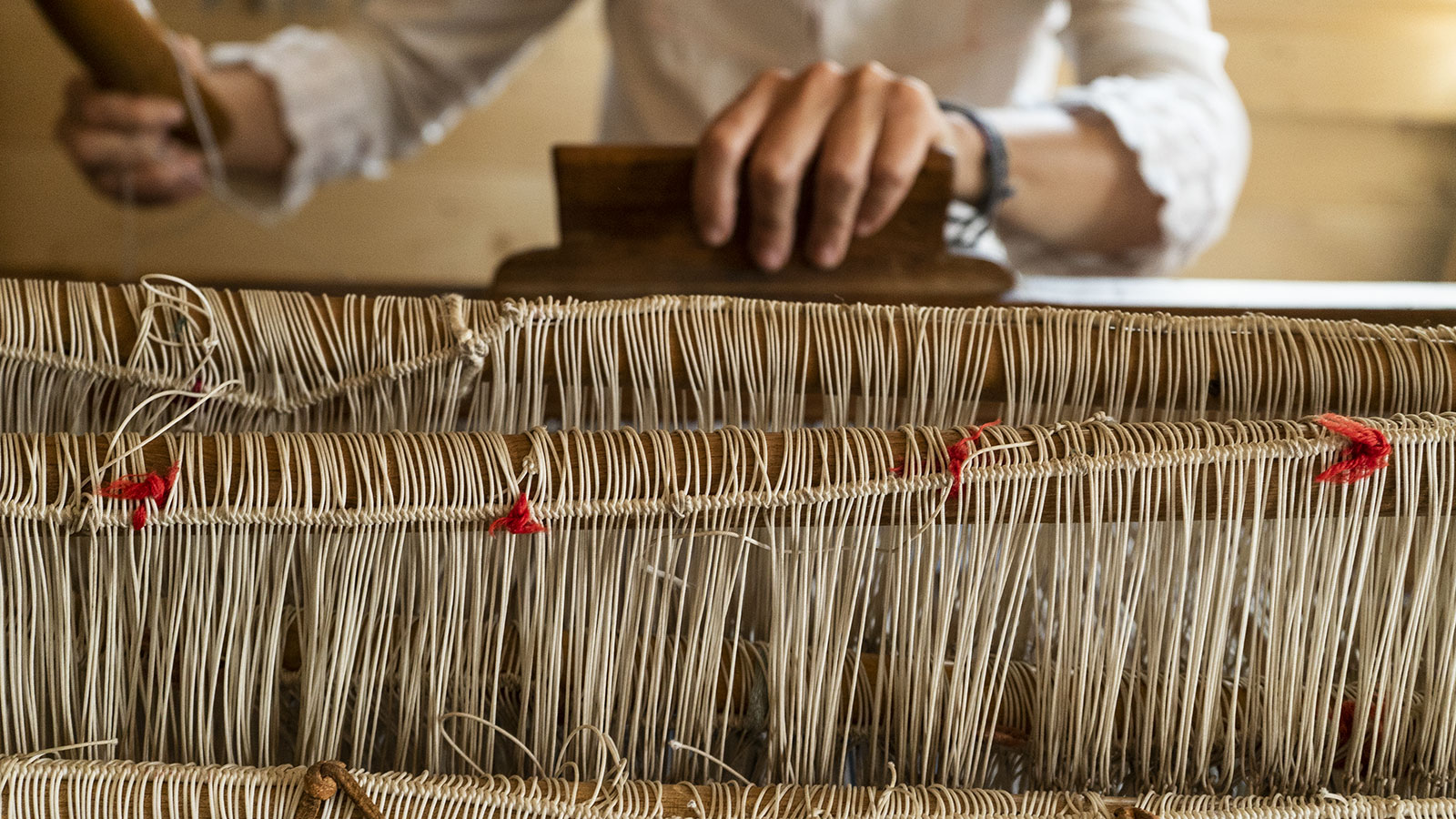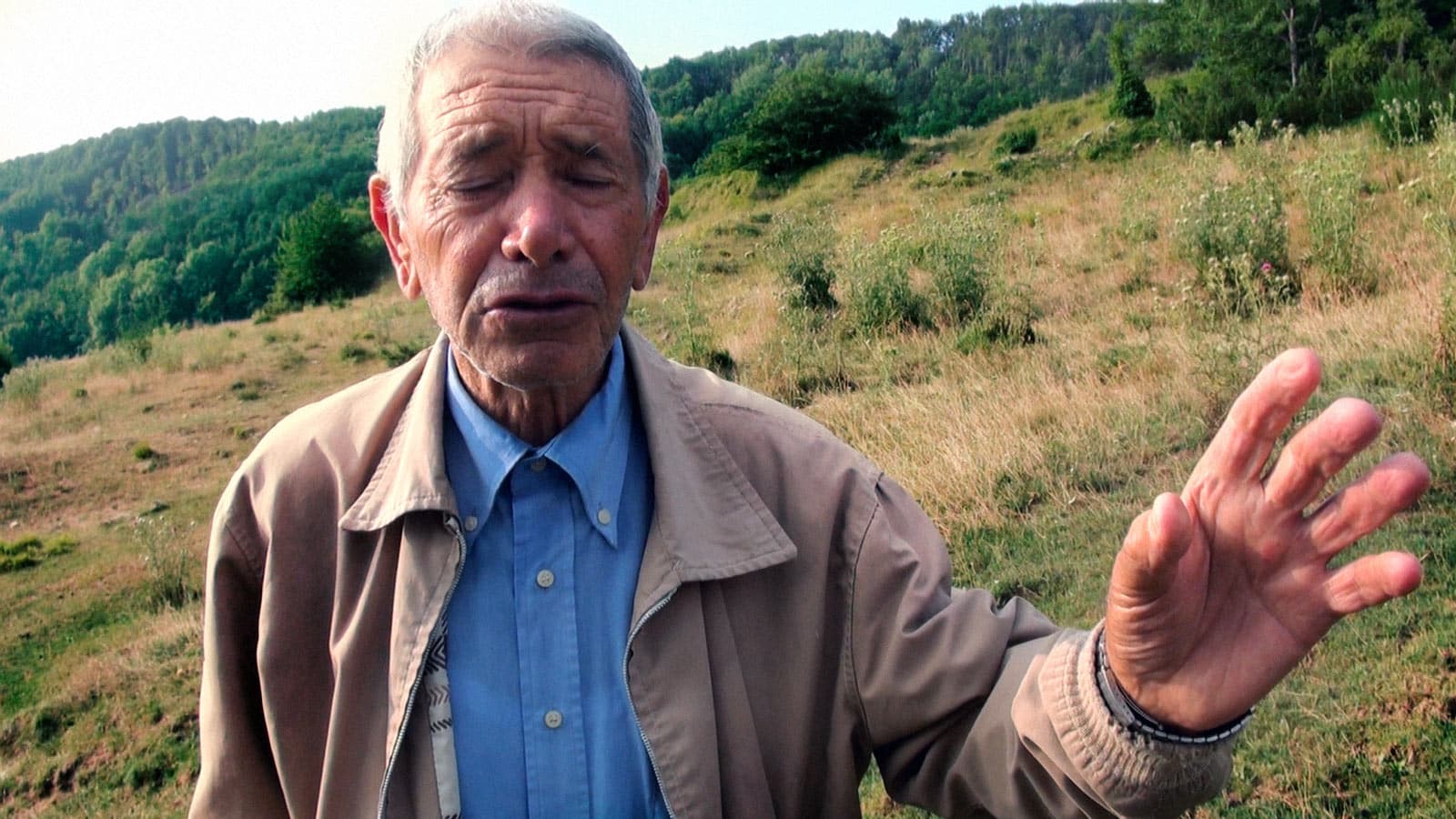Technical and craft skills
Making pecorino sheep’s milk cheese in Campotosto
The lake cheese
Pecorino cheese, together with ricotta, was the main food of the shepherds, accompanying the movements of flocks and men following the changes in the seasons and the production cycles. On the plateau and on the shores of the lake of Campotosto, not far from the High Valley of the Aterno which gives its name to the basin, the flocks graze during the hot season. With hands immersed in milk in search of coagulum, expertly thickened and collected with invisible movements, the shepherd models the wheels of cheese, the fruit of a long and unceasing work, unchanged for centuries in its essential movements, and constantly innovated for the discovery of solutions that will ensure its continuation in time.
“There was such poverty, but for us it wasn’t a real poverty, we were maybe running short of money but we didn’t miss a meal, because, with the sheep we had cheese, ricotta cheese, and then we sowed, there were the wild boars that now destroy everything; we put the rye for the cattle, but now you cannot put anything because they destroy everything, then everything is abandoned here.”
Berardino Perilli, August 10, 2015
In the area of the lake of Campotosto, the artificial basin created in the 1930s and 1940s, following the construction of three dams to feed the hydroelectric power plants of the Vomano Valley, there used to be vast fertile pastures where tens of thousands of animals grazed during the summer season. Sheep, cattle and horses fed the thriving business of the local farmers and the seasonal movements of animals and men that transferred their activity in the winter to the countryside around Rome, Terni and the Maremma area of Lazio. The territory of the plateau of Campotosto has also been famous since the last century for a typical pork product known as “mortadella”,Moreover, in the past the peaty soil, which helped to fertilize the pastures and make them particularly suitable for livestock farming, was also used to extract and produce fuel.
Still full of dandelion, thyme and chives, the land around the lake feeds the Sarda, Sopravissana, and Gentile di Puglia sheep, reared outdoors and with freedom to roam. Not all farms still practice transhumance, which is now carried out by truck; during the winter period, the flocks of local origin are predominantly kept in barns, and they adapt to the weather and to the diet of the cold season.
The preparation of pecorino cheese, together with ricotta, has always constituted a significant portion of the local dairy activities. The pecorino cheeses produced in this area respond to special techniques developed by individual shepherds, which can classify them by type and variety. In more general terms the operations follow some common procedures, shared by all the cheesemakers: milking (often manual), milk filtration, heating for fifteen to twenty five minutes to a temperature of about 40° c, adding natural rennet obtained from the stomach of a lamb, of a kid goat or even a thistle, the breaking of the curd, possibly the collection to produce cottage cheese, heating of the curd for fifteen minutes at a temperature ranging between 40° and 45°, the collection of the cheese, insertion and compression in the sfruscelle or cheese sieves for the draining of the whey, boiling the whey again to produce ricotta cheese, salting, drying and maturing of the wheels of cheese on wooden tables for periods ranging from several months to more than a year.
The filtration of the milk
Campotosto (AQ), August 10 2015.
Recording by Gianfranco Spitilli,
Don Nicola Jobbi Study Centre Archive /Bambun.
Listen to the track

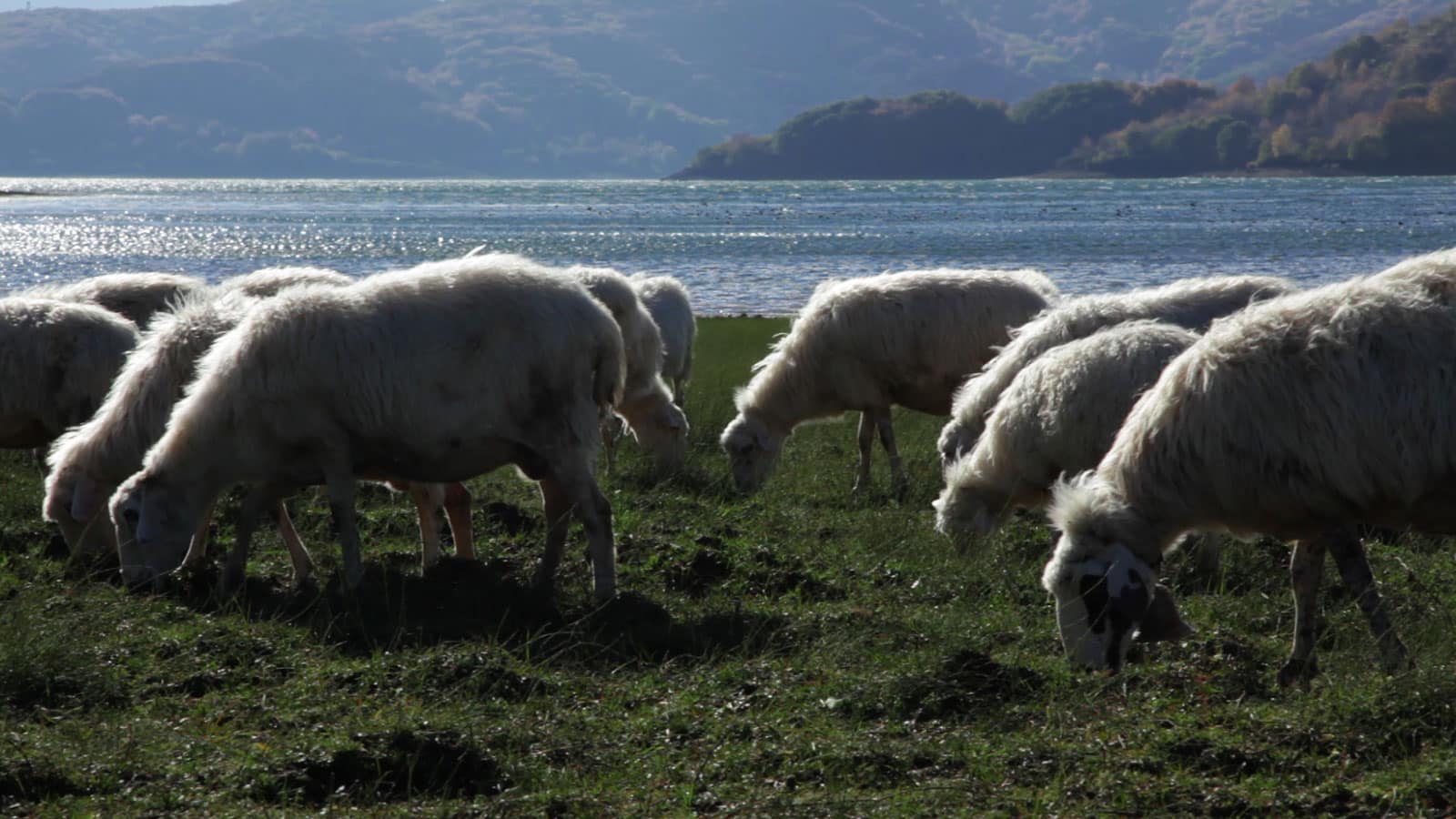
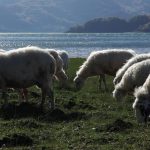
The lake cheese
The sheep and the lake
Photo by Stefano Saverioni,
Campotosto, 28 September 2015,
Don Nicola Jobbi Study Centre Archive /Bambun.
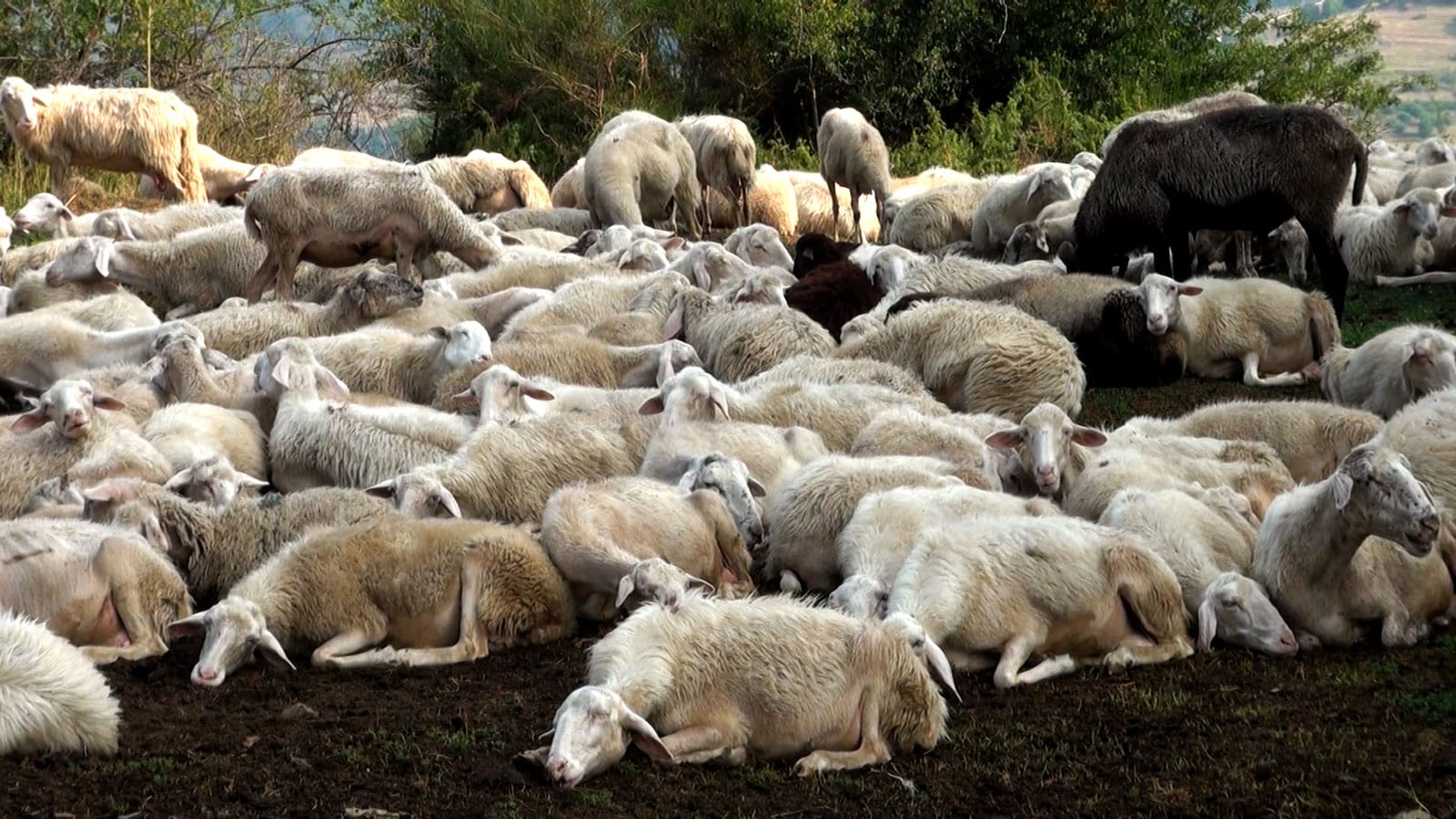
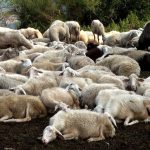
The lake cheese
Flock at rest
Photos by Gianfranco Spitilli,
Campotosto, 10 August 2015,
Don Nicola Jobbi Study Centre Archive /Bambun.
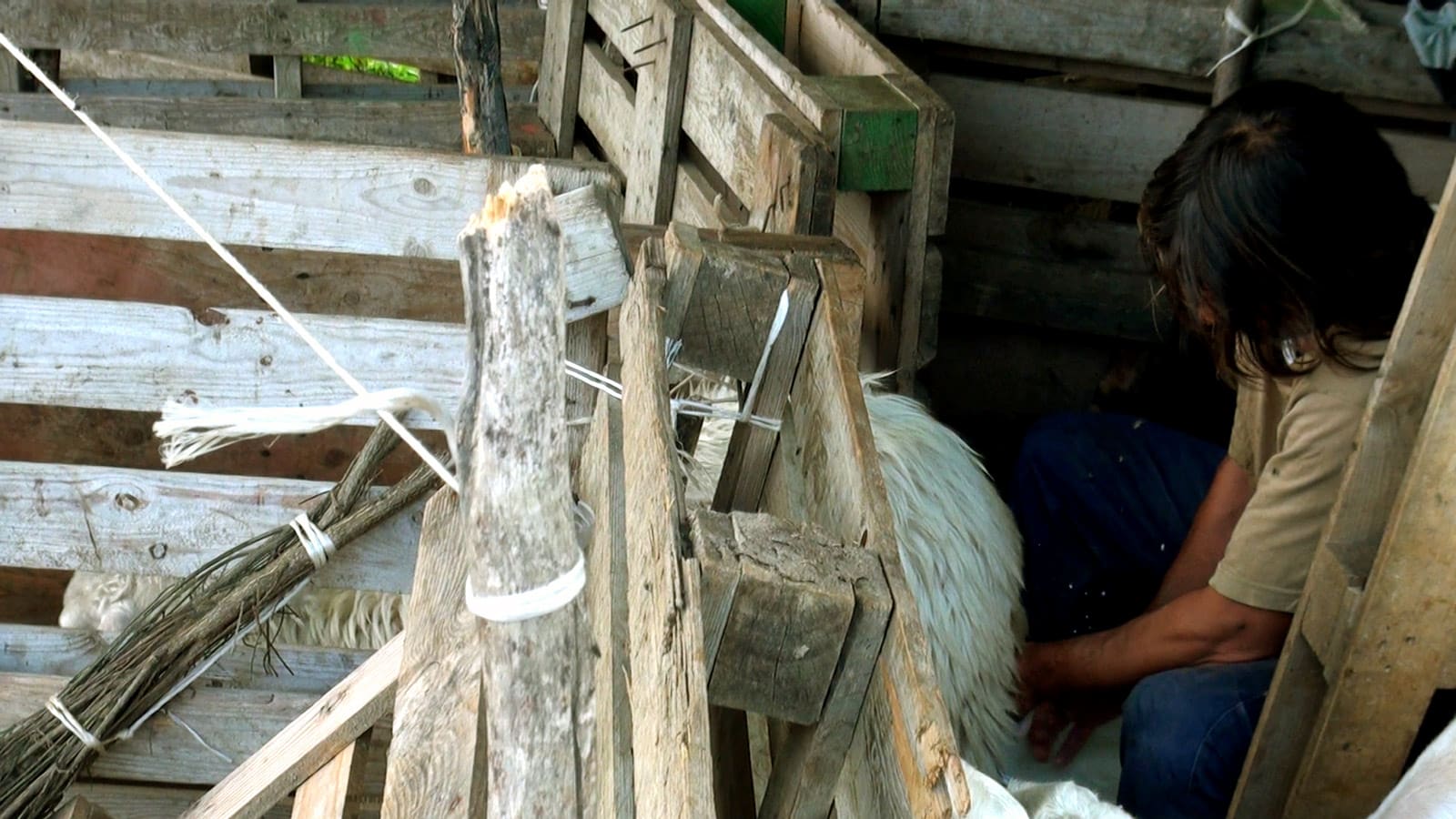
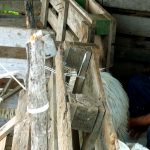
The lake cheese
Milking
Photos by Gianfranco Spitilli,
Campotosto, 10 August 2015,
Don Nicola Jobbi Study Centre Archive /Bambun.
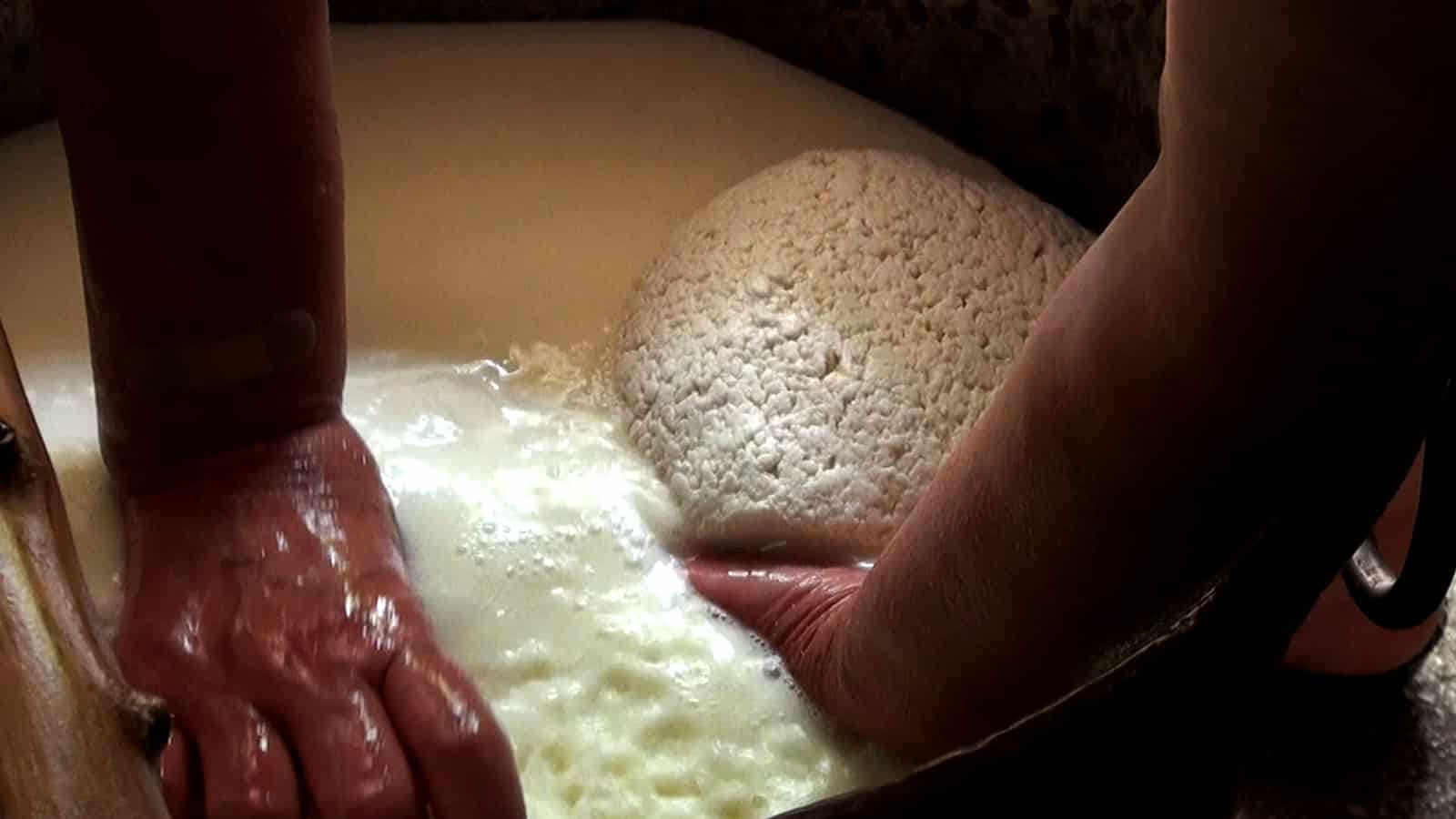
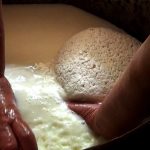
The lake cheese
Collection of the curds
Photos by Gianfranco Spitilli,
Campotosto, 10 August 2015,
Don Nicola Jobbi Study Centre Archive /Bambun.
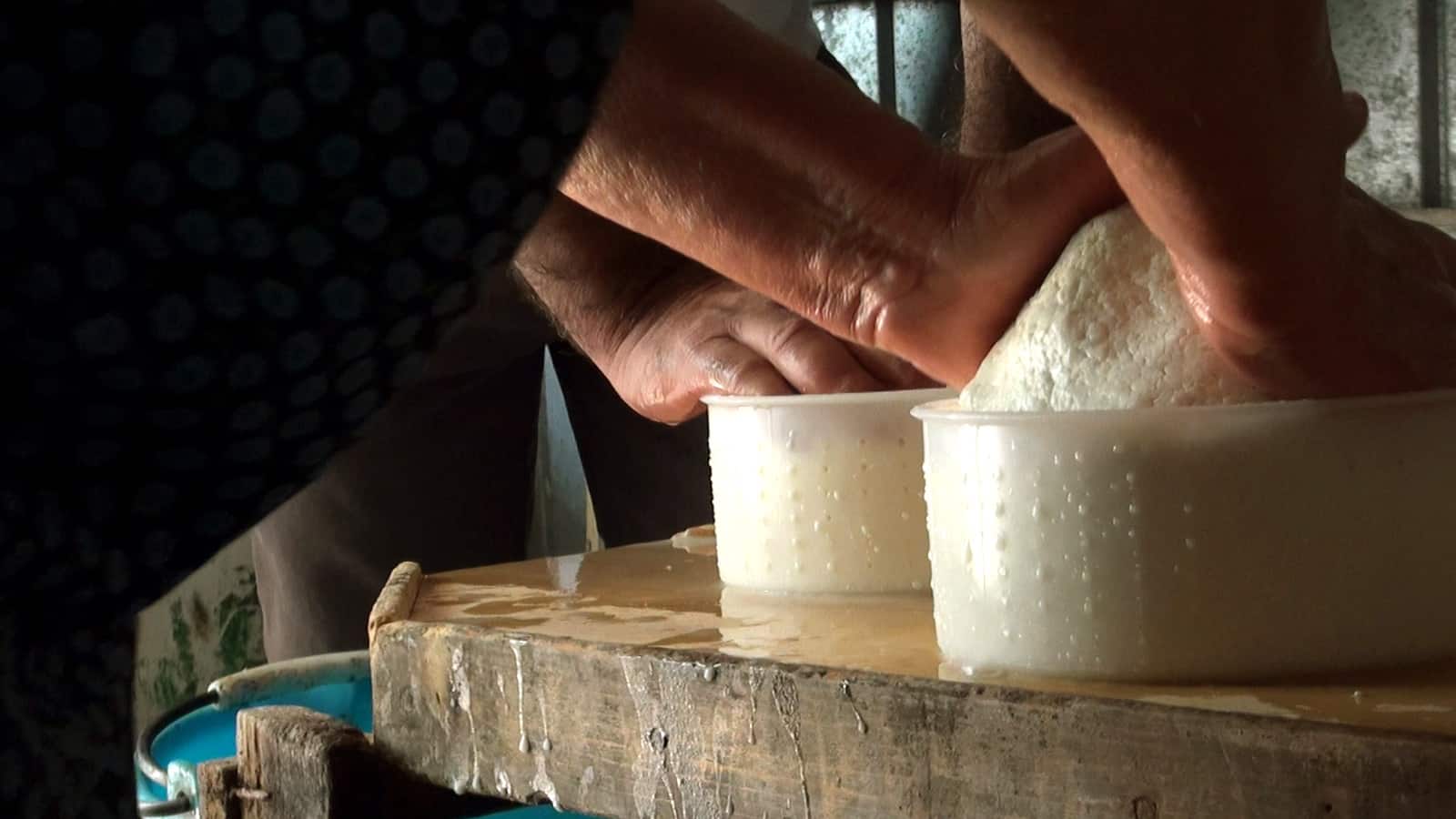
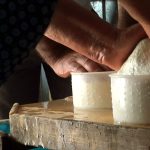
The lake cheese
Pressing and draining
Photos of Gianfranco Spitilli,
Campotosto, 10 August 2015,
Don Nicola Jobbi Study Centre Archive /Bambun.
Watch the video
The collection of the curds
Campotosto (AQ), August 10, 2015.Filming by Gianfranco Spitilli, Don Nicola Jobbi Study Centre Archive /Bambun.
Cultural transmission and protection
The production of sheep’s milk cheese in Campotosto has suffered from the difficulties caused by the disastrous combination of earthquakes and bad weather, which culminated in the great snowfall of January 2017, when the territory was jointly subjected to a sequence of shocks of high magnitude that caused, together with the weight of the snow, the collapse of numerous barns and the death of a total of ten thousand animals throughout the affected area. Coldiretti has estimated damages in the sector of agriculture and livestock for a value of over fifty-two million euros. The difficulties of the whole territory, heavily depopulated and in part inaccessible due to the danger of collapse of buildings and the closure of streets and historical town centres even to pedestrians, have caused a drastic reduction in sales that has hit most of all the renowned cheese and salami but also the knowledge and the practices related to them.
It is, therefore, at the present time, a heritage that is strongly at risk, kept alive by a few farmers in the area of the lake who continue their production in conditions of extreme hardship but with renewed determination. Both historic cheese factories and newly established ones who have courageously invested in the business by committing themselves to the transmission of inter-generational knowledge handed down over the centuries, use their expertise to produce various types of sheep’s milk cheese, with animal or vegetable rennet. The “caciofiore” cheese from L’Aquila, for example, is obtained using the coagulation produced by the thistle and it has received international awards and recognitions in the version proposed by the La Mascionara cheese factory, one of the oldest in the territory. In fact, innovation is as important an element as transmission for the survival of the art of cheese-making: in this regard it is important to mention the production of a lactose free cheese called Galattico, in which a particular enzyme transforms the lactose into galactose, making it digestible even to people who are lactose intolerant.

